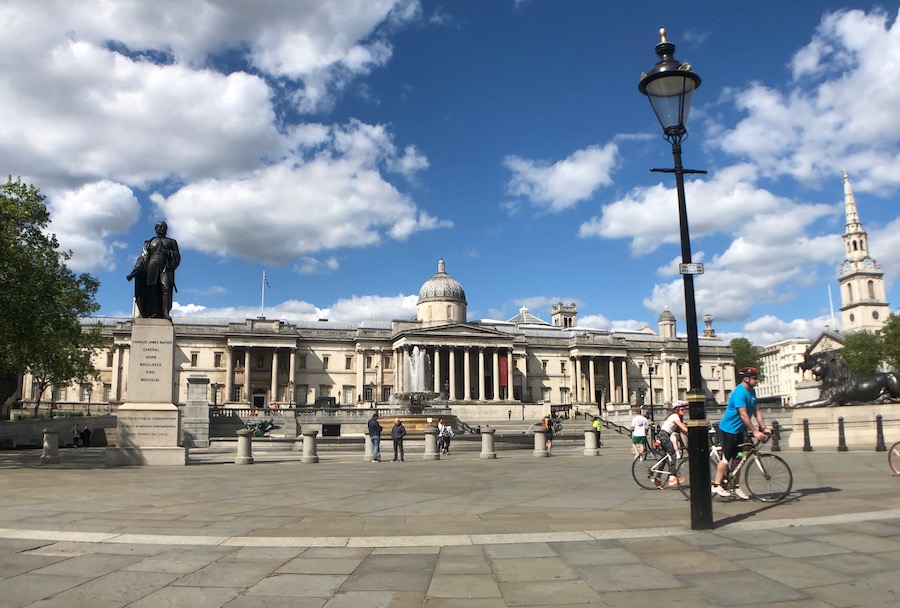At the moment there is an undeclared contest going on, both within the British art world and also, on a much larger scale, in the international sphere. This contest takes several inter-related forms. For example, there is the competition between official and semi-official galleries and commercial ones.
The art world has become plural, in the sense that western art is no longer fully dominant – ELS
There is also, increasingly, the conflict between the wish to be politically correct – i.e. to embrace a series of approved social attitudes, linked to topics such as race and gender – and a sometimes opposed-to-this desire to seem artistically radical and experimental, following a narrative that has been built up since the Modern Movement in art first manifested itself, more than a hundred years ago. Add to these two other factors. One is the fact that experimental art has quite largely slipped into the hands of official institutions, rather than remaining in the hands of private patrons. The other is that it has become increasingly linked to radical new ways of presenting images, thanks to scientific rather than purely artistic explorations. And add, yet again, the fact that the art world has become plural, in the sense that western art is no longer fully dominant. It has been forced to absorb artistic traditions quite other than its own.
Commercial galleries exist, as the term itself suggests, to sell art. Money changes hands. So too do objects, though commercial galleries have now occasionally ventured into new categories, such as performance art. Selling art is a luxury trade, and the target audience – individuals and also representatives of institutions who buy, is small. Gallery events, such as fashionable openings, are part of a mechanism of publicity, directed to promoting sales. Because commercial galleries are essentially shops, they tend to keep shop hours, and during these, they do not charge a fee to visitors who wish to enter their premises and inspect what they have to offer—attempting to make distinctions between moneyed and non-moneyed visitors would be too complicated. A certain froideur, directed at visitors they don’t want, serves commercial galleries well enough.
The audiences attracted by large public galleries are somewhat different from those who visit commercial operations, both those who come in person and those who visit on the web. A paradox is that, unlike those who visit commercial galleries, those who come in person to official galleries are often prepared to pay a fee, just as if they were going to the cinema or attending a concert or a play. These fees have become more necessary because public galleries are no longer fully subsidised by the government. To present temporary exhibitions, they often need to look for outside sponsorship.

A difference of another kind is that the hours of access to public galleries, as opposed to those prevalent in cinemas, theatres and concert halls, are often less, rather than more, friendly to the kind of public that they, all of them, wish to attract.
There is also an unacknowledged split between the audience these public galleries get, and the audience they claim to have. Since their offerings are (or were) for most of the week, available only during working hours, what these galleries chiefly drew in, before the pandemic struck, were tourists and the retired. Also, for the part of their offerings that were accessible free of charge, they – Tate Britain in particular – got large parties of schoolchildren, who came from schools in the Greater London area, and perhaps an area just a little beyond that. They were, therefore, before the pandemic, a well-established but not, in fact, a universal part of the British education system.
The tourist audience immediately vanished, due to the impact of the coronavirus, when all British galleries, both public and commercial, were forced to close. The big London public spaces are now laboriously re-opening and trying to regain their audience, with many new physical constraints. Throngs of tourist visitors seem unlikely, under present conditions, to return in a hurry. The school kids may have gone missing as well. The idea of big London art galleries as a kind of multiple cultural El Dorado both spiritually and financially, may now be a thing of the past. So too, perhaps, is the idea that official galleries specialising in modern and contemporary art must be, above all else, democratic fun palaces. It is difficult to think of what might conveniently replace these formulae, which are themselves comparatively recent in origin.
This will not, of course, be the first time that the best intentions of official bodies, supposedly in full charge of the future of culture, have been caught flat-footed by some wholly unexpected catastrophic event. What is novel here is that the mayhem is so immediately accessible and public, thanks most of all to the worldwide web. The irony also is that what new means of communication show us looks astonishingly like the self-confident world of High Victorian culture, just when this began to be brought down by the first wave of the Modern Movement. ‘The more things change, the more they are the same.’

